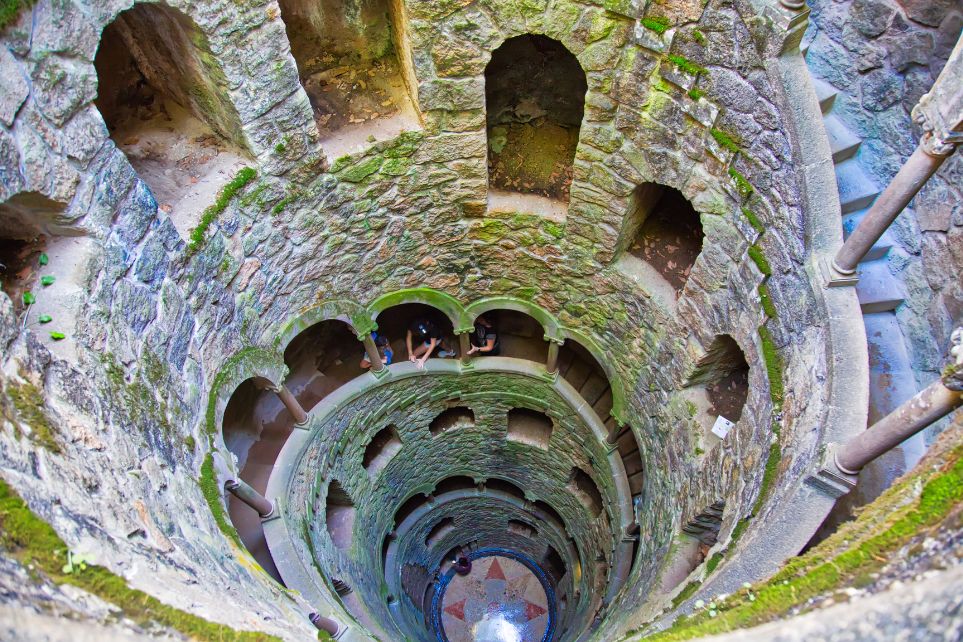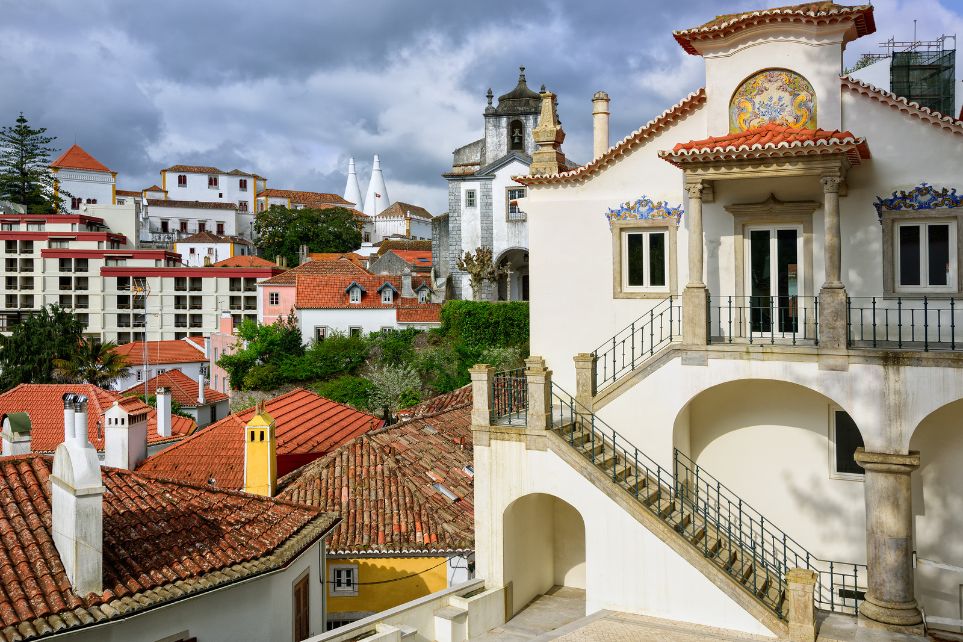
Setting off on a tuk-tuk expedition from Lisbon to Sintra, I brimmed with anticipation for a day immersed in enchantment. Guided by the knowledgeable Luiz, our journey promised to unveil the treasures of this magical town, starting with its historic heart. Embarking on a tuk-tuk tour from Lisbon to Sintra with Luiz offers a plethora of benefits that elevate the entire experience. Luiz’s expertise and intimate knowledge of the area ensure seamless navigation, allowing you to glide effortlessly from one enchanting site to another. With the convenience of a tuk-tuk, you’re whisked right up to the entrances of each destination, bypassing parking hassles and maximizing your time for exploration. Moreover, Luiz serves as a personal guide, regaling you with captivating tales of Sintra’s history and community, enriching your journey with insights and anecdotes. Additionally, Luiz takes care of all your tickets to the sites, sparing you from the hassle of queuing and ensuring a hassle-free adventure filled with wonder and discovery.
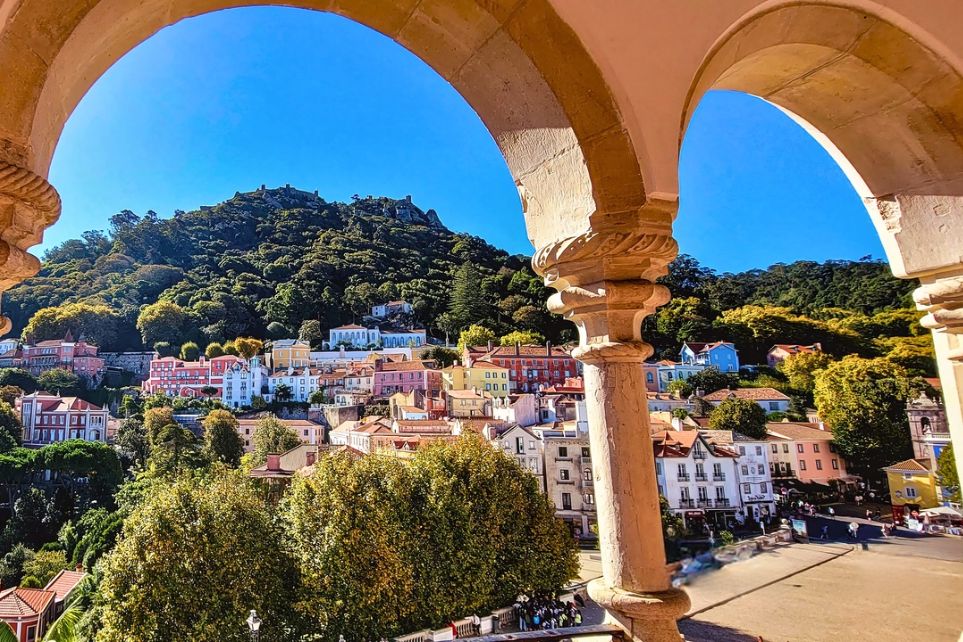
Why Sintra?
Nestled in the hills just outside Lisbon, Sintra is a city that feels like it belongs in a fairy tale. It is like embarking on a journey through history. The city is home to several remarkable palaces and estates, each with its own unique story. The views from the palaces are nothing short of breathtaking, offering panoramic vistas of the surrounding landscape.
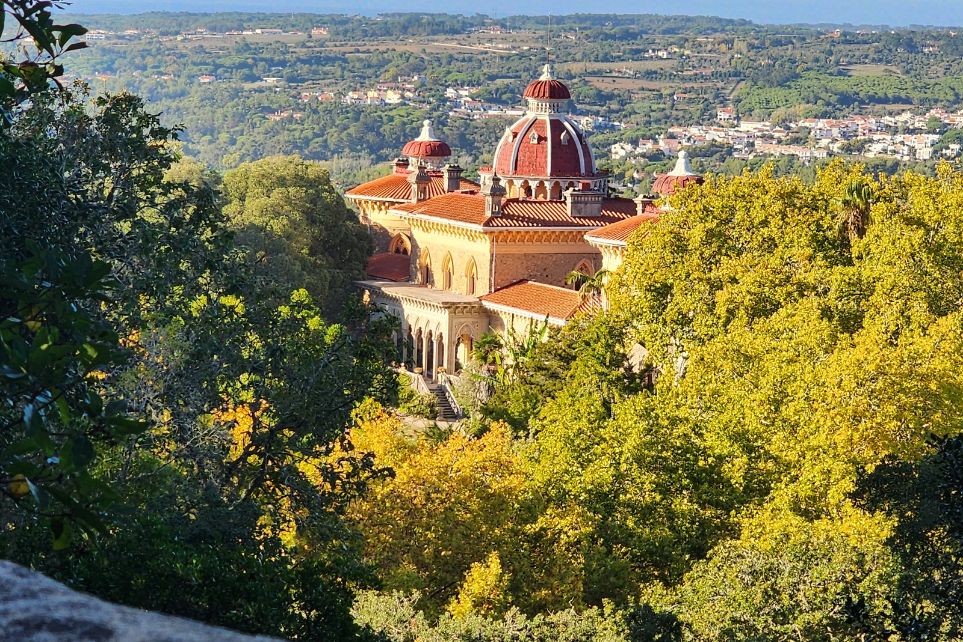
Things to See in Sintra
National Palace of Sintra
Our adventure commenced at the venerable National Palace of Sintra, its twin chimneys towering over the cobblestone streets below. Inside, the opulent halls and ornate chambers whispered tales of centuries past, offering a glimpse into Portugal’s royal heritage. The National Palace of Sintra has a history that dates back to the Moorish occupation of the Iberian Peninsula. The site was originally used as a Moorish castle before being transformed into a royal palace by King John I in the 15th century. Subsequent monarchs, including King Manuel I, added their touches to the palace, resulting in the stunning architectural amalgamation we see today.
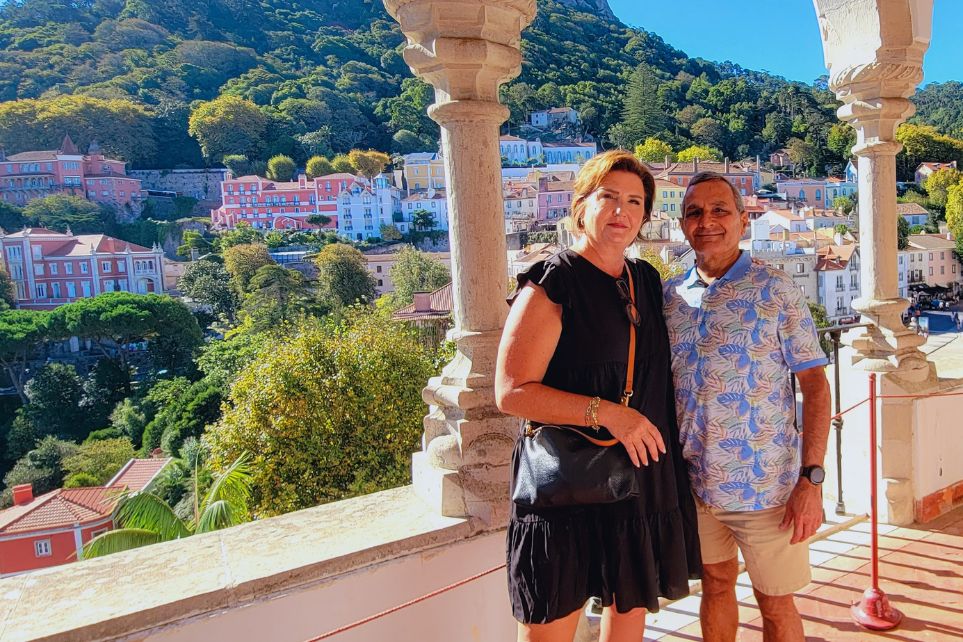
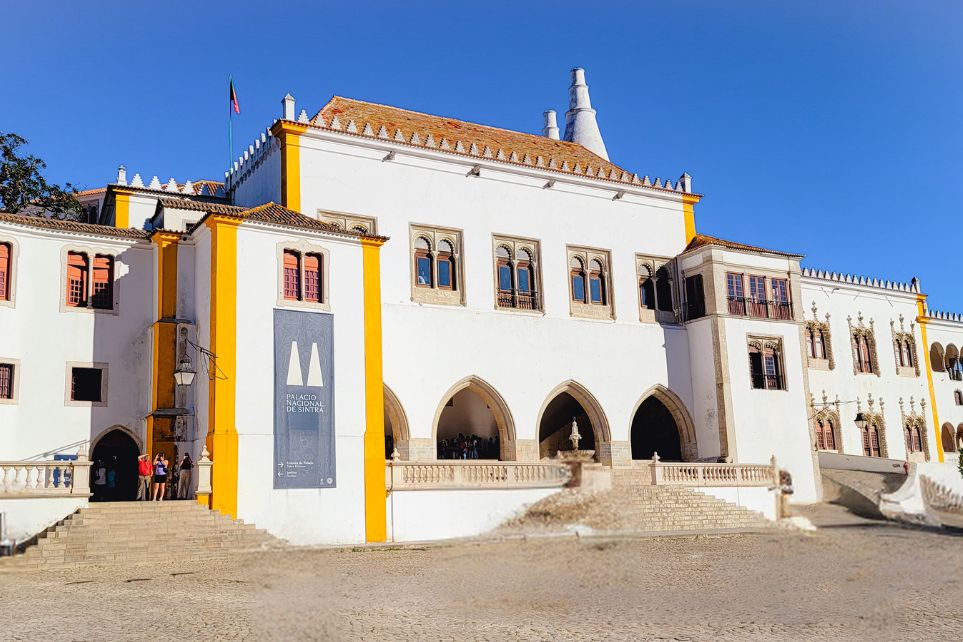
One of the most striking features is its twin conical chimneys, which dominate the skyline of the town. These chimneys are part of the palace’s grand kitchen and serve as a distinctive and iconic symbol of Sintra. Their unique design not only provided efficient ventilation for the massive kitchen fires but also added a touch of architectural flair that continues to capture the attention of visitors. The interior of the palace is a treasure trove of intricately decorated rooms, each with its own unique charm and historical significance.
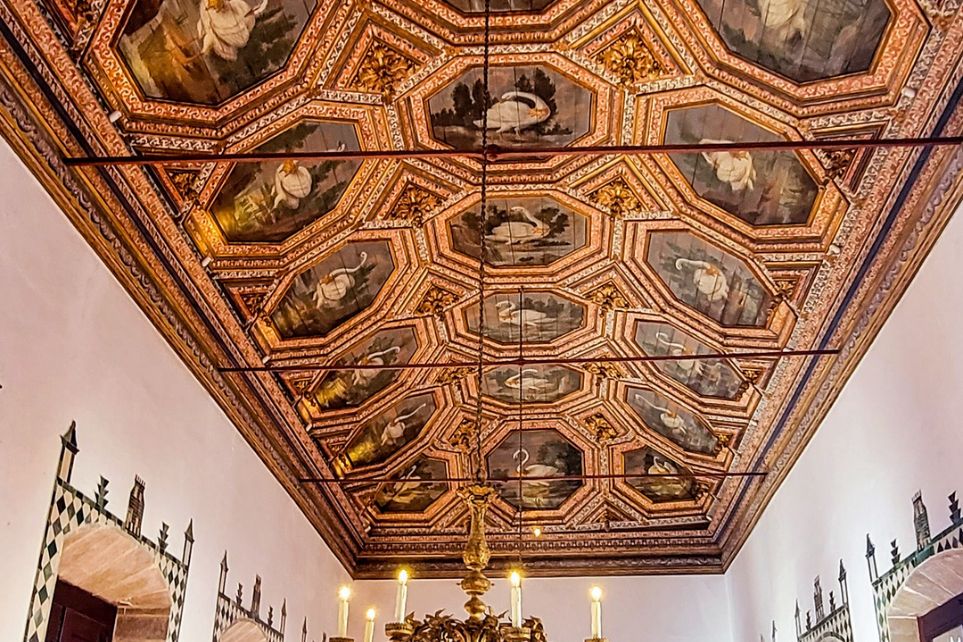
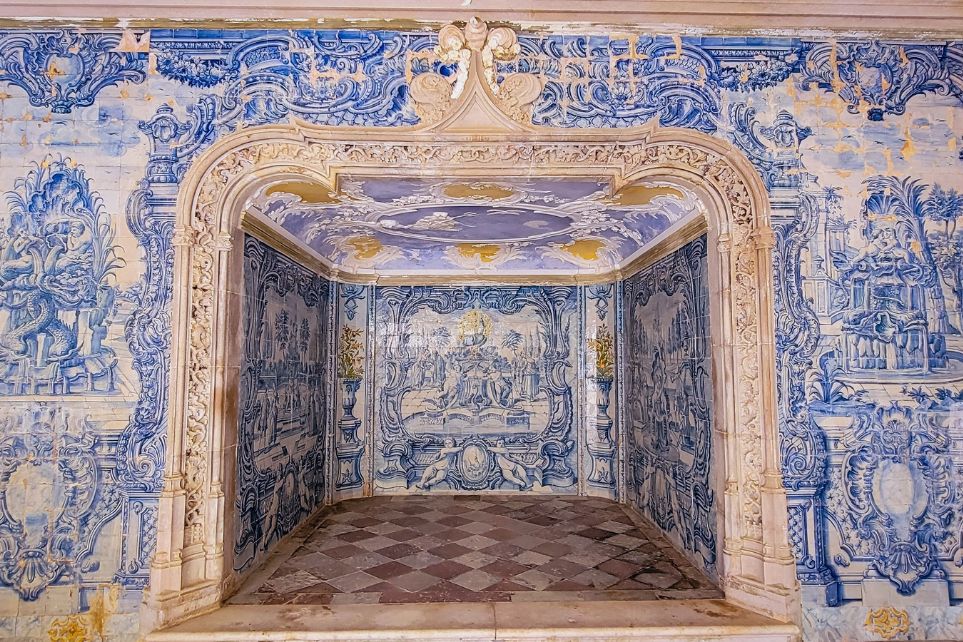
The Swan Room, or Sala dos Cisnes, is one of the highlights, adorned with beautifully painted swans on its ceiling. This room was used for banquets and receptions and offers a glimpse into the lavish lifestyle of the Portuguese royalty.

The Chapel of the National Palace is another gem, featuring exquisite Mudéjar tiles and a stunning wooden ceiling. The blend of Christian and Islamic artistic influences in the chapel reflects the multicultural heritage of Portugal and adds to the palace’s allure. The palace’s courtyards and gardens provide a serene escape, allowing you to soak in the beauty of the surroundings while reflecting on the rich history of the site.
- Hours of Operation: 9:30 AM – 7:00 PM; Admission: €8. Skip the Line Tickets HERE.
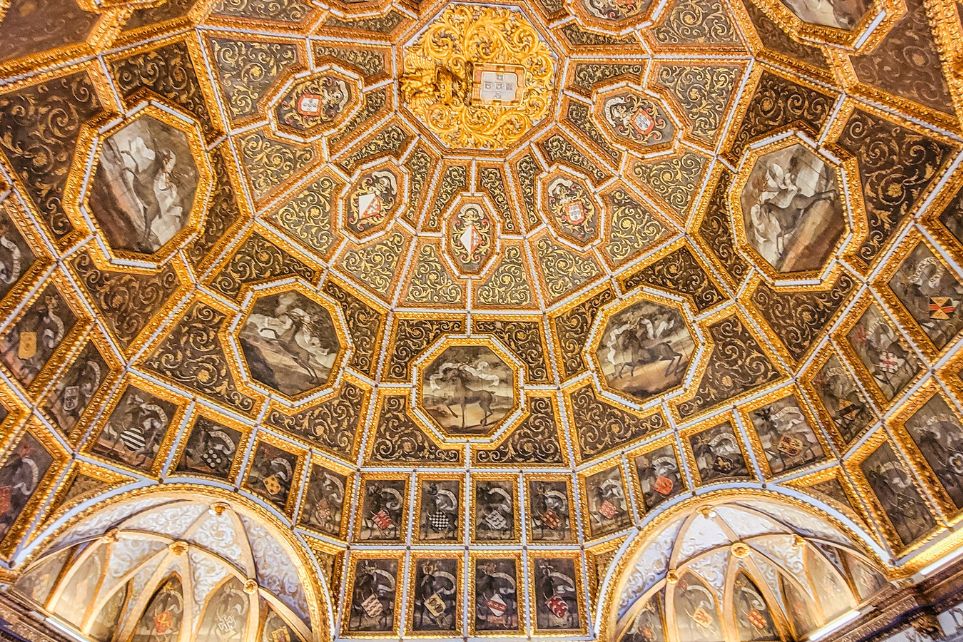
Quinta da Regaleira
Venturing deeper into the old town, we discovered the hidden gem of Quinta da Regaleira. This mystical estate, with its enchanting gardens and labyrinthine tunnels, invited us to unravel its secrets and connect with the mystical energy that permeated its grounds. Quinta da Regaleira, built in the early 20th century, is a stunning example of Neo-Manueline architecture, a style that combines elements of Gothic, Renaissance, and Manueline influences. Monteiro, a wealthy Brazilian entomologist, and Freemason, collaborated with the Italian architect Luigi Manini to create a place that reflected his fascination with secret societies, alchemy, and the mystical. The result is a labyrinthine estate filled with symbols, hidden meanings, and intricate details that invite visitors to embark on a journey of discovery.
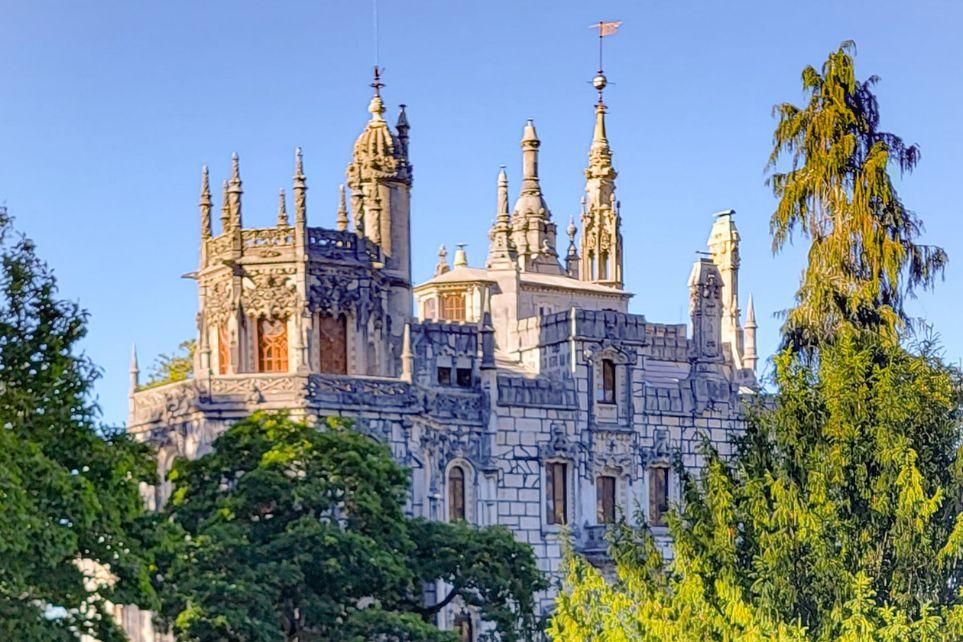
One of the most famous and intriguing features of Quinta da Regaleira is the Initiation Well. This spiraling subterranean tower, descending nine levels into the earth, is believed to have been used for Masonic initiation rites. As you make your way down the well via the winding staircase, you can’t help but feel a sense of awe and mystery. At the bottom, a series of tunnels connect to various parts of the estate, adding to the sense of adventure and exploration. The gardens are another highlight of the estate. Designed to resemble a mystical and mythical landscape, the gardens are filled with grottoes, fountains, statues, and hidden pathways that beckon you to wander and discover. Every corner of the garden seems to hold a secret or a story, from the hidden caves to the romantic benches tucked away amidst the foliage. The lush greenery and carefully crafted elements create a serene and magical atmosphere that is perfect for a leisurely stroll.
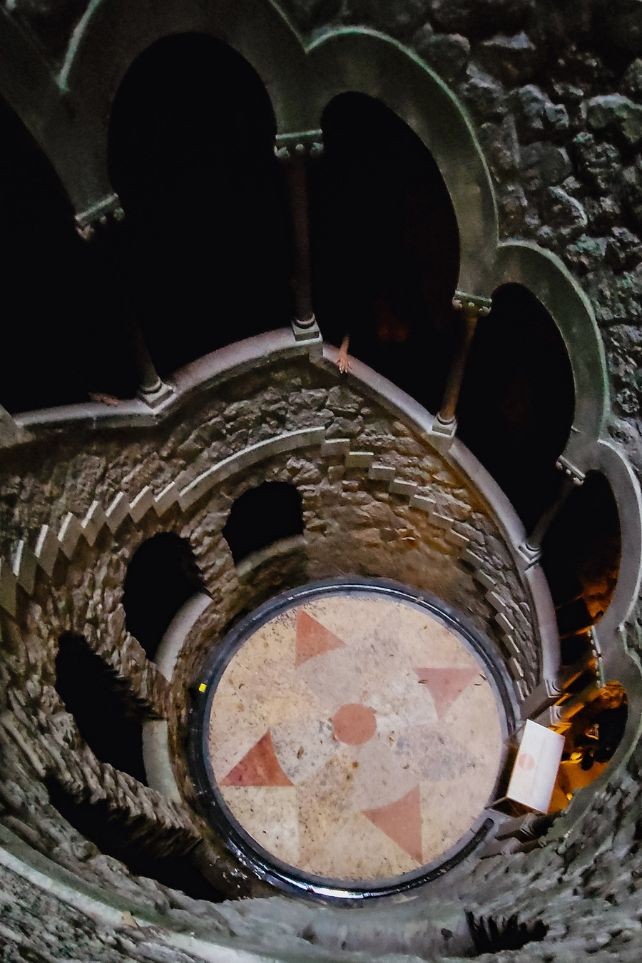
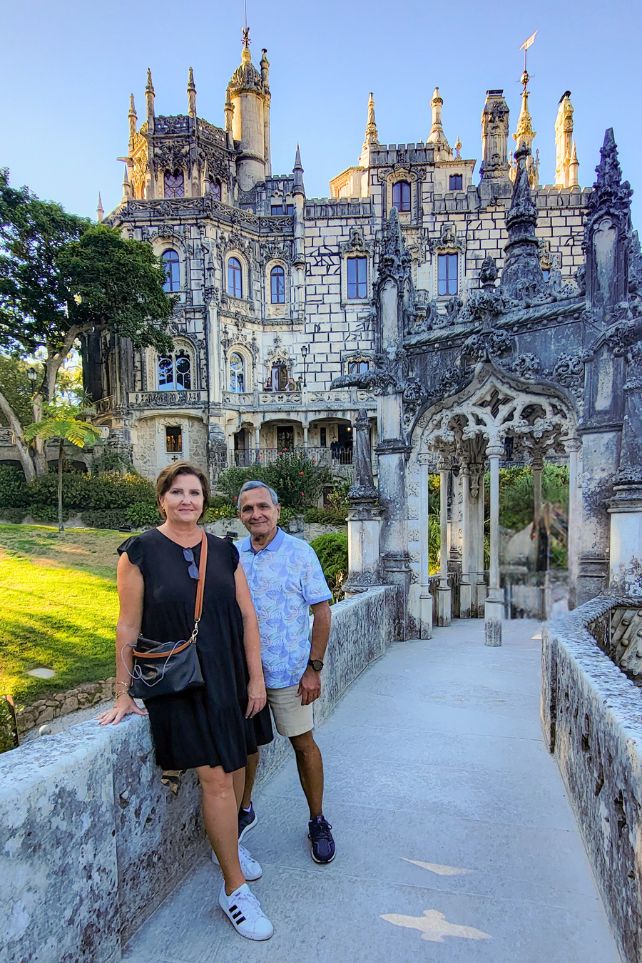
Inside the main house, known as the Palácio da Regaleira, you’ll find a rich display of ornate woodwork, stained glass, and decorative tiles. Each room is filled with artistic details and symbolic motifs that reflect Monteiro’s interests and beliefs. The palace offers a glimpse into the opulent lifestyle of its former owner and provides a fascinating backdrop to the overall experience of Quinta da Regaleira.
- Hours of Operation: 9:30 AM – 7:00 PM; Admission: €8. To avoid lines for tickets, click HERE.
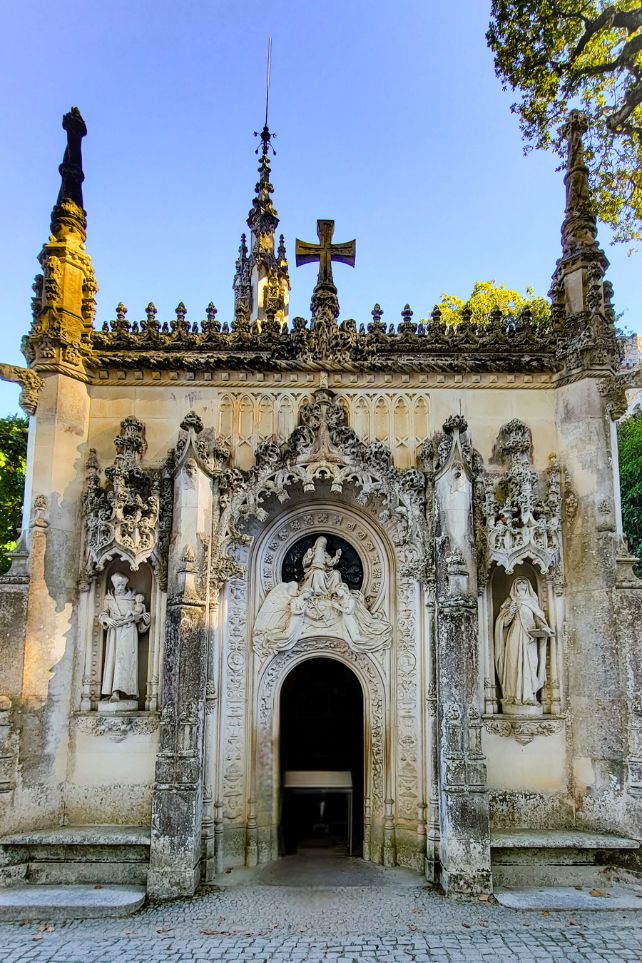
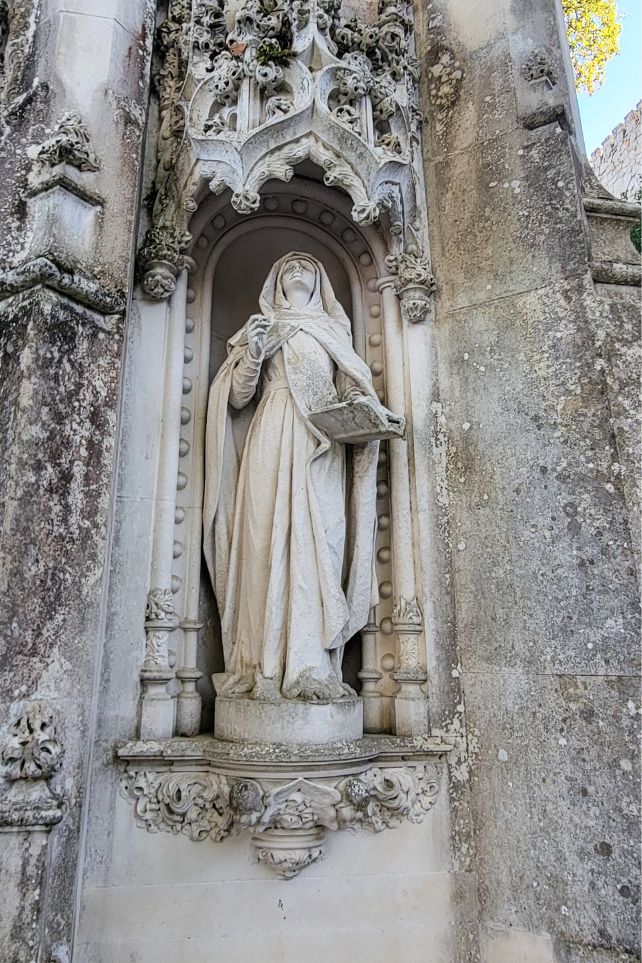
PSST: HERE ARE SOME OTHER BLOG POST YOU MAY WANT TO CHECK OUT WHILE VISITING PORTUGAL:
Day Trip From Porto to Braga
Uncover Loule in the Algarve Region
Medieval Town of Silves
Day Trip to Ferragudo and Portimao
Day Trip to Averio: Romantic City
Things to See and Do in Porto
Heart of Old Town Sintra
Amidst the winding alleys and quaint squares of the old town, we found ourselves immersed in the authentic charm of Sintra’s historic heart. Here, colorful facades adorned with blooming bougainvilleas and cozy cafes exuded a timeless allure, inviting us to wander and soak in the ambiance.
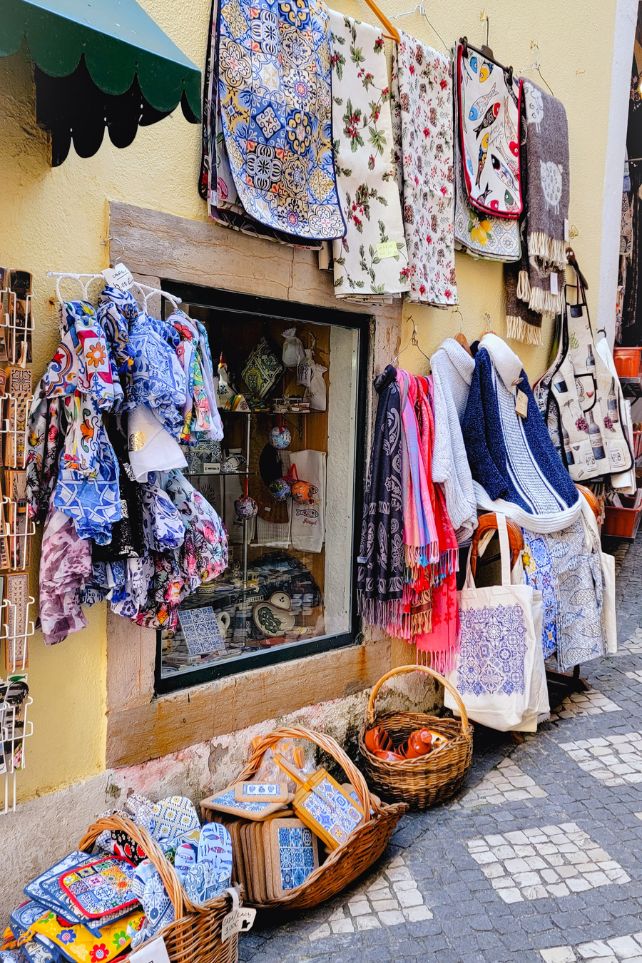
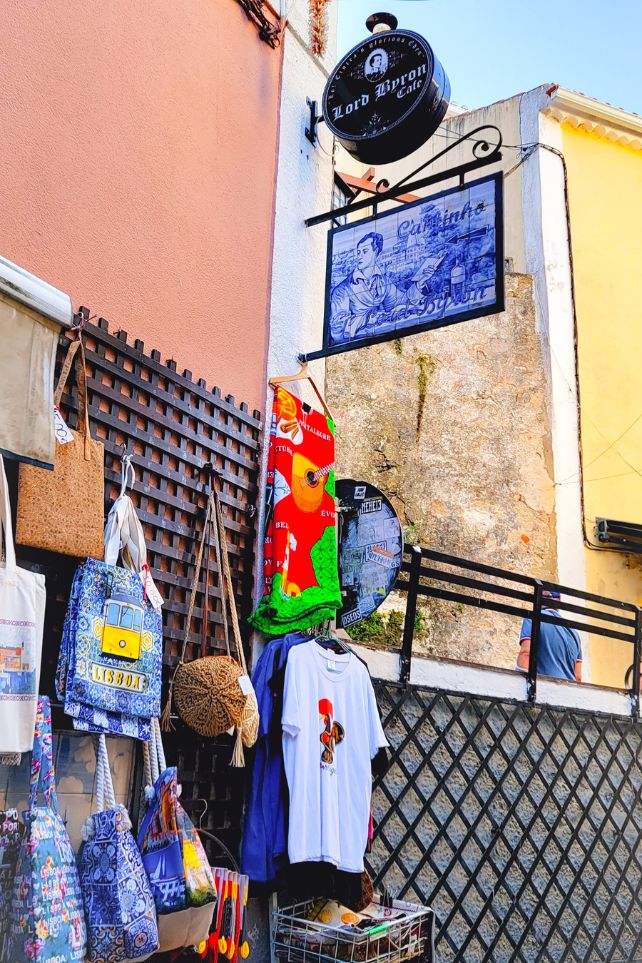
Pena Palace
Ascending the verdant hills, we reached the iconic Pena Palace, its vibrant hues and whimsical architecture dominating the skyline. From its panoramic terraces, we marveled at the sweeping vistas of Sintra’s lush landscapes, a breathtaking backdrop to this fairytale fortress. Pena Palace has a fascinating history that adds to its allure. Originally a modest chapel, the site was transformed into a grand palace in the 19th century by King Ferdinand II. Inspired by Romanticism, he blended various architectural styles, including Gothic, Manueline, Moorish, and Renaissance elements, to create a truly unique and fantastical structure.
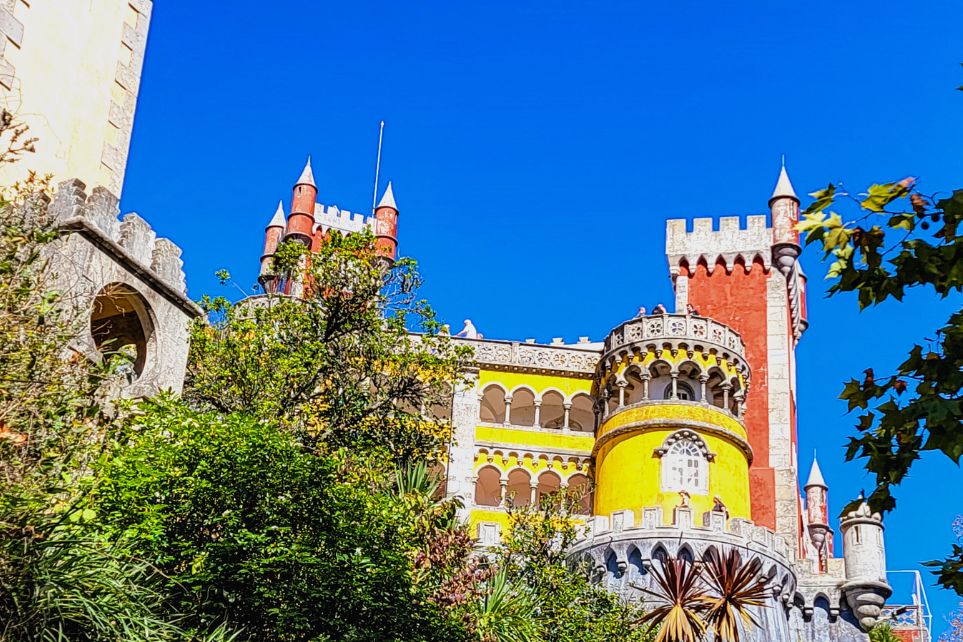
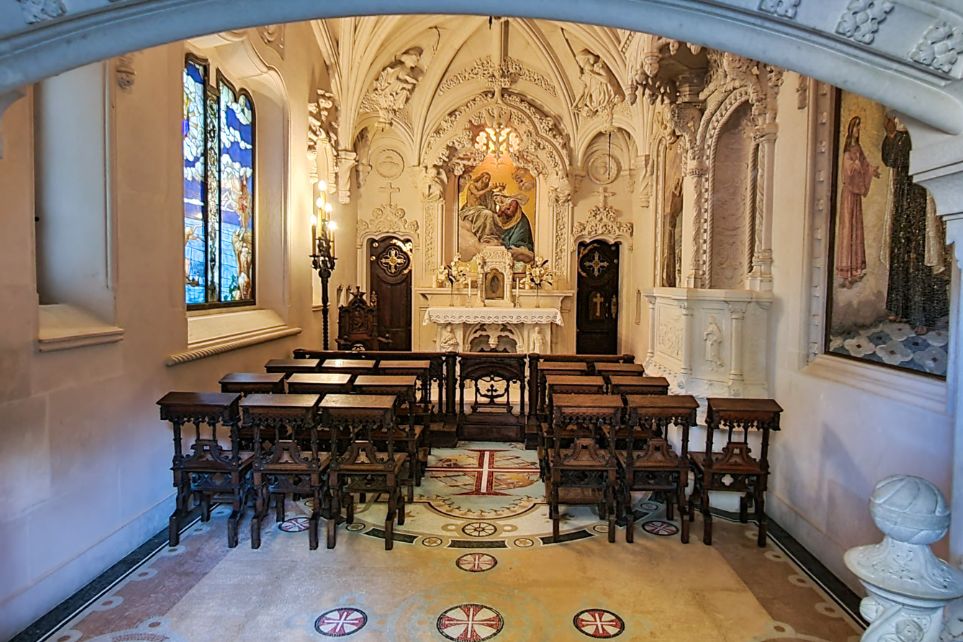
The palace’s vibrant colors, intricate tile work, and stunning details make it a masterpiece of Romantic architecture. It served as a summer residence for the Portuguese royal family until the early 20th century and played a role in significant events in Portuguese history. Today, it stands as a symbol of Portugal’s rich cultural heritage and attracts visitors from around the world who come to marvel at its beauty and immerse themselves in its history.
- Hours of Operation: 9:30 AM – 7:00 PM; Admission: €14.
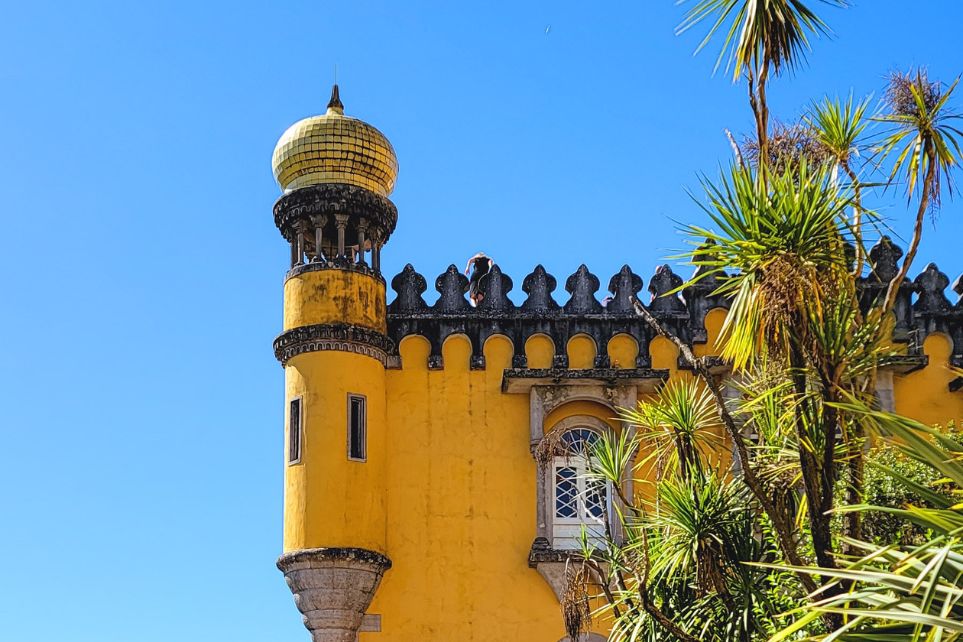
Monserrate Palace
Our journey culminated at the serene grounds of Monserrate Palace, where exotic flora and architectural splendor converged in a symphony of beauty. Amidst the tranquility of its gardens, we found respite and inspiration, a fitting end to our exploration of Sintra’s rich tapestry. Monserrate Palace, originally built in the late 18th century, has a fascinating history that reflects the changing tastes and influences of its time. The estate was first commissioned by an English merchant named Gerard de Visme, but it was later acquired and transformed by Sir Francis Cook, a wealthy British industrialist. Sir Francis enlisted the talents of architect James Knowles and landscaper William Stockdale to create a palace and gardens that would rival the finest estates in Europe.
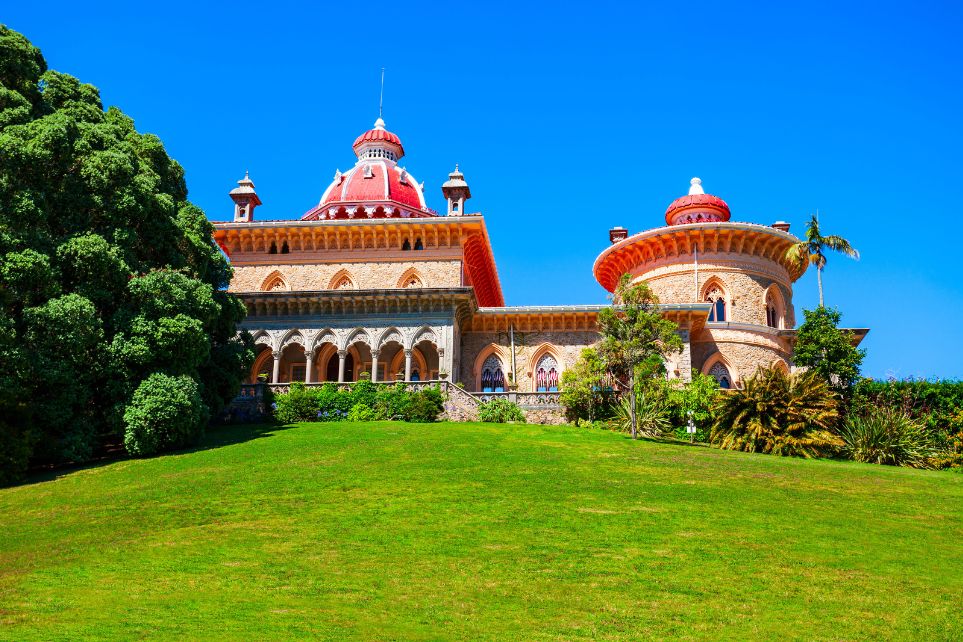
The palace itself is an exquisite blend of Gothic, Indian, and Moorish architectural styles. As I approached, I was immediately struck by its ornate façade, featuring intricate carvings and detailed stonework. The design of Monserrate Palace is a visual feast, with its domes, arches, and geometric patterns creating a harmonious and exotic aesthetic. Stepping inside, I was greeted by lavish interiors that showcased the same eclectic mix of influences. Each room is adorned with elaborate decorations, from the intricate stucco ceilings to the richly colored tiles and frescoes. The gardens are a botanical wonder, meticulously designed to incorporate plants and trees from all over the world. As I strolled along the winding paths, I discovered a diverse array of flora, from towering palms to delicate ferns and vibrant flowers. The landscape is dotted with charming features like fountains, grottoes, and even a romantic artificial ruin, all contributing to the garden’s enchanting ambiance.
- Hours of Operation: 9:30 AM – 6:00 PM; Admission: €8.
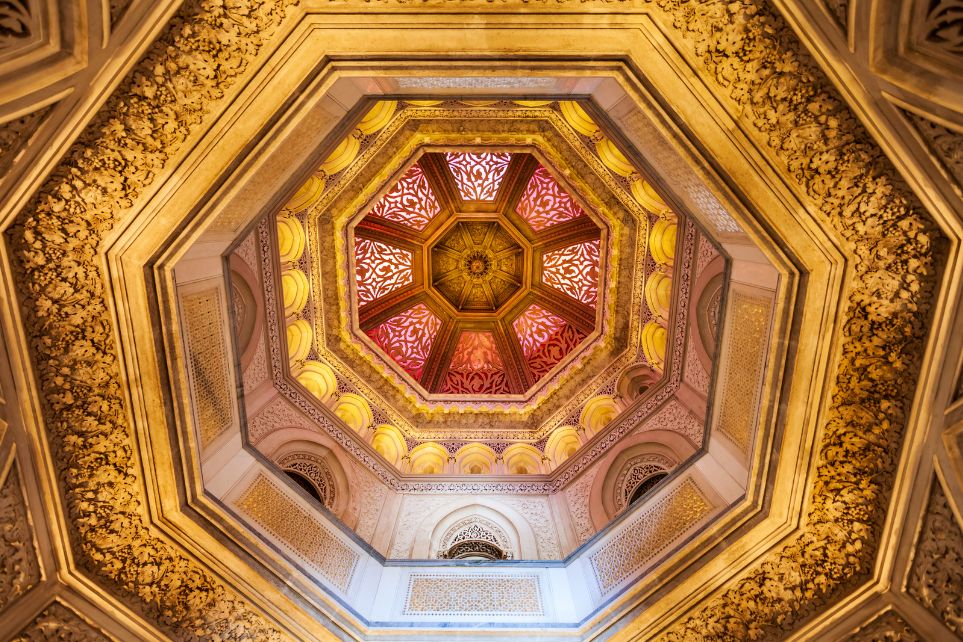
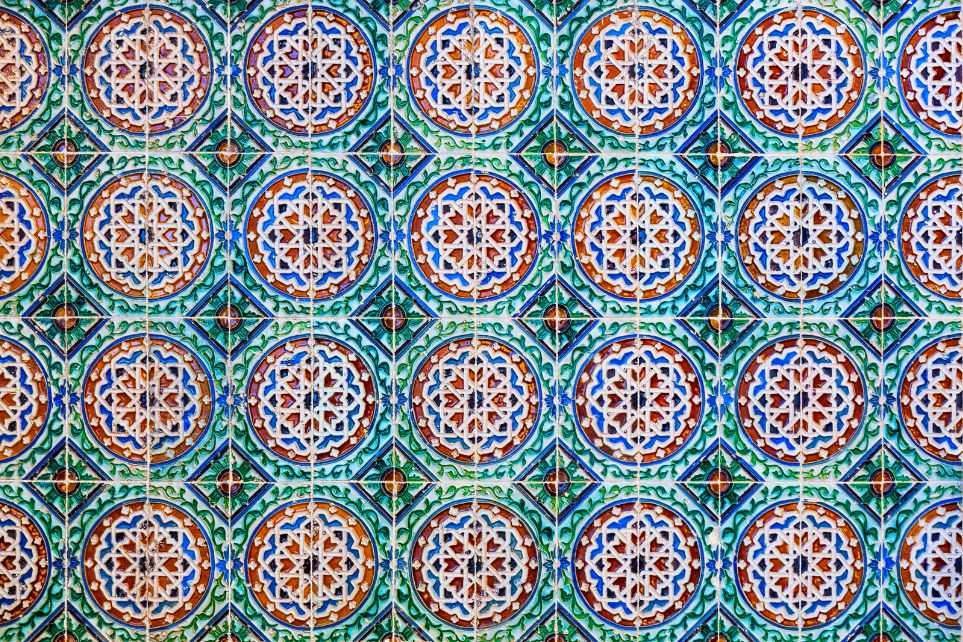
As we bid farewell to Sintra, its timeless allure lingered in our hearts, a testament to the enduring magic of this enchanting town. From its historic landmarks to its hidden corners, each discovery had woven a thread of fascination, leaving an indelible mark on our souls. Whether tracing the footsteps of royalty or wandering the labyrinthine paths of its gardens, Sintra promises a journey of discovery and delight. With its old-world charm and captivating beauty, it invites travelers to lose themselves in its enchanting embrace, a timeless treasure waiting to be explored.
Enjoy your travels! Please read my blogs about other exciting places around the world at Traveling Lens Photography.
If you want to read more, follow me on Facebook, Instagram, or Pinterest as I share my journey.
Happy Travels!




